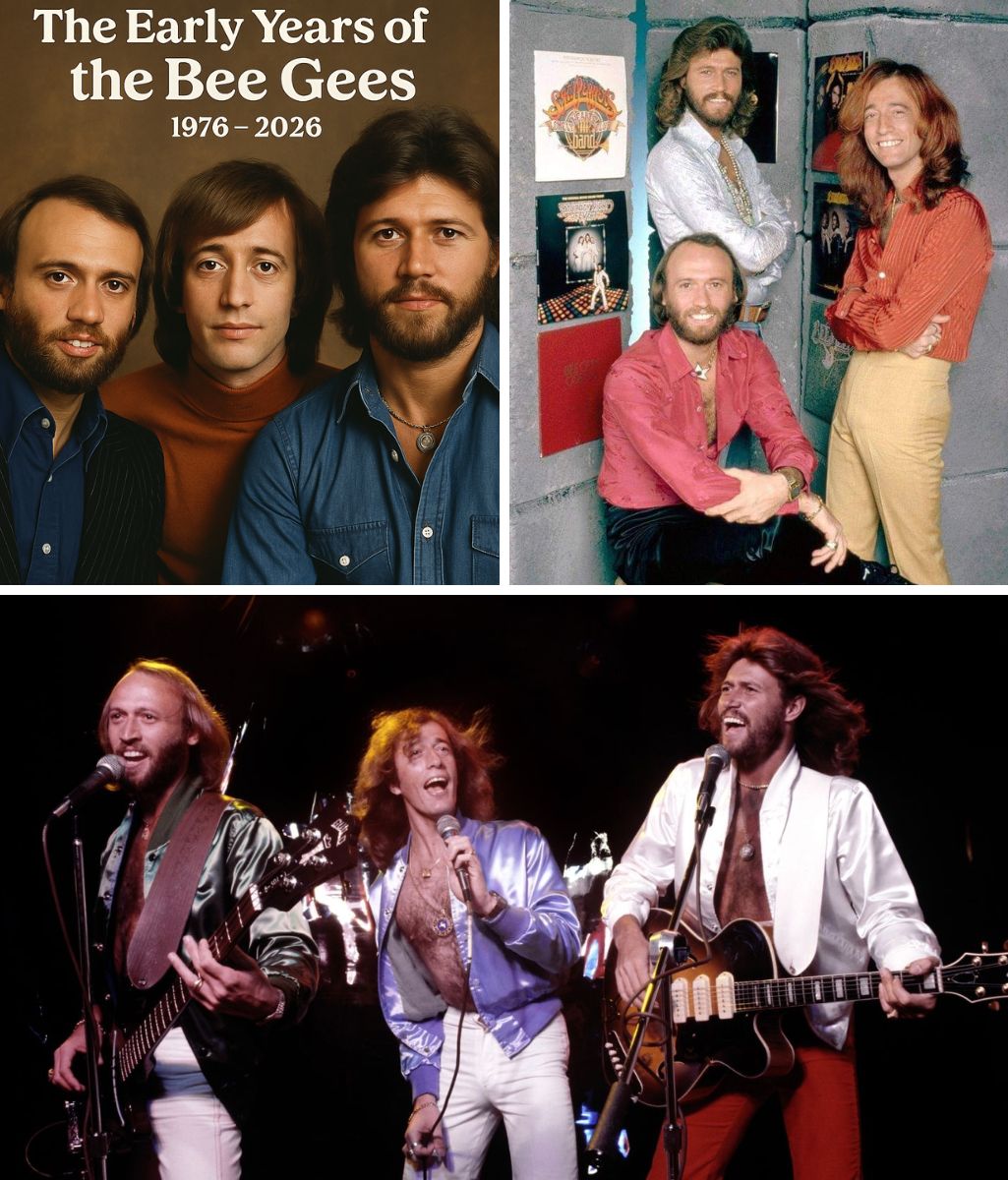
HISTORIC REVEAL: The Early Years of the Bee Gees — From the Isle of Man to Global Stardom
The story of the Bee Gees is one of resilience, reinvention, and timeless music, but it began in the humblest of settings. Maurice Gibb and his twin brother Robin were born on the Isle of Man, in the town of Douglas—a windswept island in the Irish Sea known more for its racing traditions than for producing global music icons. Alongside their older brother Barry, the Gibb boys grew up in a family steeped in music and creativity, their father a drummer and bandleader, their mother a singer.
The family returned to England during the brothers’ early years, settling in Manchester, where much of their childhood unfolded. Life was not always easy; post-war Manchester was a gritty industrial city, but it was also alive with music, from skiffle groups to the early rumblings of rock and roll. The brothers absorbed it all, harmonizing in their bedrooms and singing on street corners, already honing the vocal blend that would one day captivate millions.
In 1958, the Gibb family made a bold decision that would change everything: they emigrated to Australia, settling in Brisbane. It was there, far from the cultural centers of London or New York, that the brothers first began performing together in earnest. They played at small local venues, appeared on radio programs, and quickly built a reputation as talented young performers with an uncanny ability to weave their voices into a single, haunting harmony.
Their first breakthrough came in the early 1960s with the release of “Spicks and Specks.” The single became a hit in Australia, topping charts and giving the Bee Gees their first taste of real success. For the young trio, it was proof that their dreams were not only possible but within reach. The song’s success caught the attention of industry figures back in England, paving the way for the brothers’ return to the UK and their eventual launch onto the international stage.
What set the Bee Gees apart in those early years was not only their harmonies but their songwriting. Even as teenagers, Barry, Robin, and Maurice displayed a maturity beyond their years, crafting lyrics and melodies that carried emotional weight. That talent would soon blossom into some of the greatest hits of the 20th century, from tender ballads like “To Love Somebody” to the dance-floor anthems that defined the disco era.
Looking back, the journey from the Isle of Man to Manchester, and then across the globe to Australia, was more than a geographic shift—it was the forging of identity. Each move exposed the brothers to new sounds, cultures, and opportunities that shaped their artistry. By the time they stepped onto the world stage in the late 1960s, they carried with them not just their voices but the experiences of three continents, ready to make their mark.
Today, more than six decades after those formative years, the Bee Gees’ story continues to inspire. Their rise from modest beginnings to global superstardom is a reminder of the power of family, determination, and above all, music. From “Spicks and Specks” to “Stayin’ Alive,” the roots of their success trace back to those early days when three brothers dreamed big and sang even bigger.